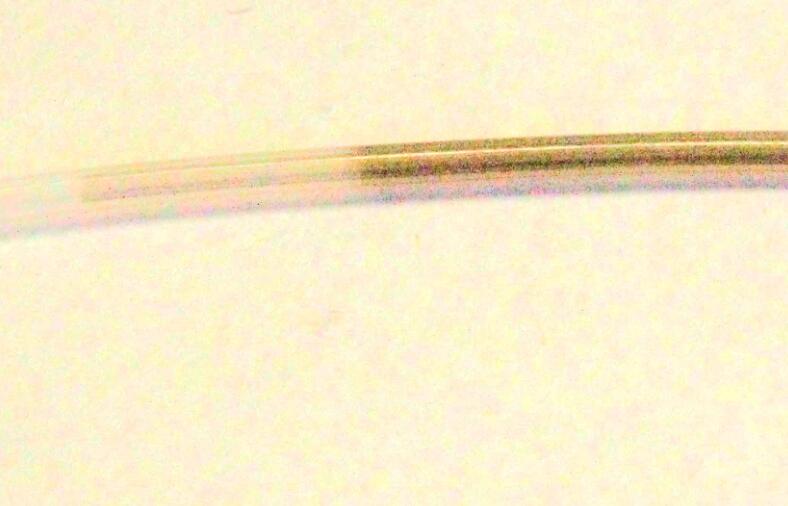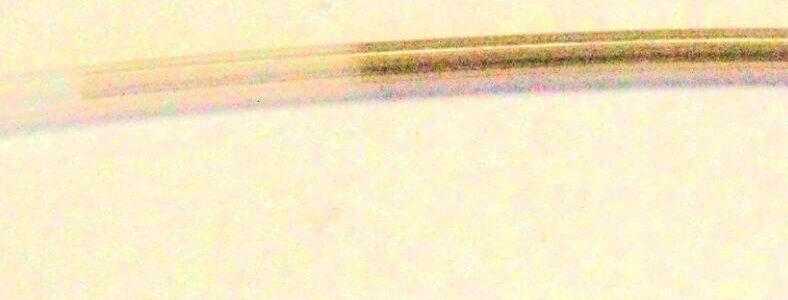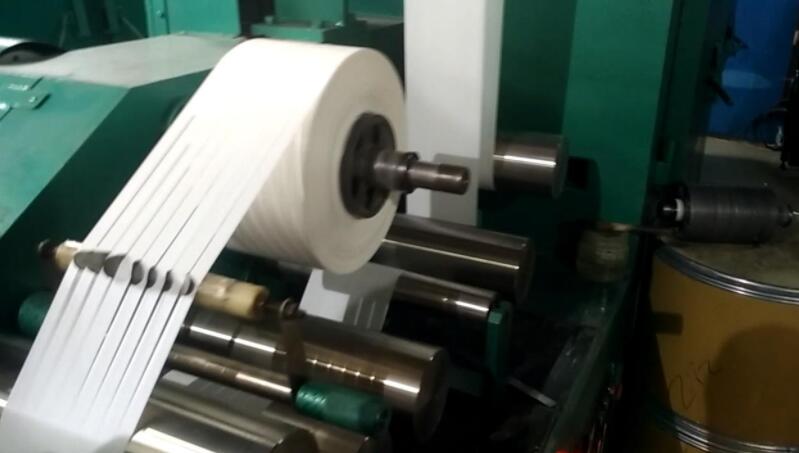Etching is a chemical process that removes the fluorine atoms from the surface layer of the fluoropolymer. This surface layer is so thin; it is most conveniently measured in Angstroms. Once the fluorine atoms are removed, the carbon atoms left behind in the etched polymer quickly forms temporary bonds with atoms from the air, such as oxygen, nitrogen, and sometimes even hydrogen. Since these bonds are much weaker, the carbon atoms are still reactive, reducing the surface lubricity and allowing for a more bondable product. Because of the loss of carbon-fluorine bonds, once the surface of your fluoropolymer is etched, the properties of the etched area are changed. One will no longer have the lubricous and low energy surface that is expected from a fluoropolymer. Instead, one will have a wettable, bondable, frictional surface upon which to glue, mold, or print onto your product.
Etching will only affect the chemistry of the surface with which it comes in contact. The properties of your fluoropolymer are kept intact not only underneath the etched surface, but on the entire remaining unetched surface as well, meaning that the etched product’s bulk properties are unaffected by this process.
The results of the etching are not permanent, however. If left unused for long periods of time or stored incorrectly, the etched part regains its initial low bondability.
Chemical treatment of PTFE is almost impossible because PTFE is completely inert against chemical attack of all conventional organic solvents, acids and lyes. The only chemical substance to attack PTFE is a solution ao alcaline metals which is able to etch PTFE forming alcaline fluorides. The process is very dangerous and all substances involved are extremely hazardous.
A perfect alternative is plasma treatment by hvdrogene used for process gas in a low pressure plasma. Hydrogene ions and radicals react with fluorine atoms to Hydrofluoric acid and leave unsatturated carbon bindings which provide perfect links for organic molecules of coating substances.
The chemical etching process causes a reaction between the fluorine molecules in the surface of the material and the sodium solution. The fluorine molecules are stripped away from the carbon backbone of the fluoropolymer, which leaves a deficiency of electrons around the carbon atom. Once exposed to air, hydrogen, oxygen molecules and water vapour restore the electrons around the carbon atom. This results in a group of organic molecules that allow adhesion to take place.





I think tthe admin of this site is truly working hard for his site, for the reason that here every information is quality based stuff.
My web site – metal wire spool
Have you ever considered about adding a little bit more
than just your articles? I mean, what you say is fundamental and all.
However think about if you added some great pictures or video clips to give your posts
more, “pop”! Your content is excellent but with images and clips, this site could certainly
be one of the very best in its niche. Terrific blog!
The secret of success is to stick to your own goals and beliefs